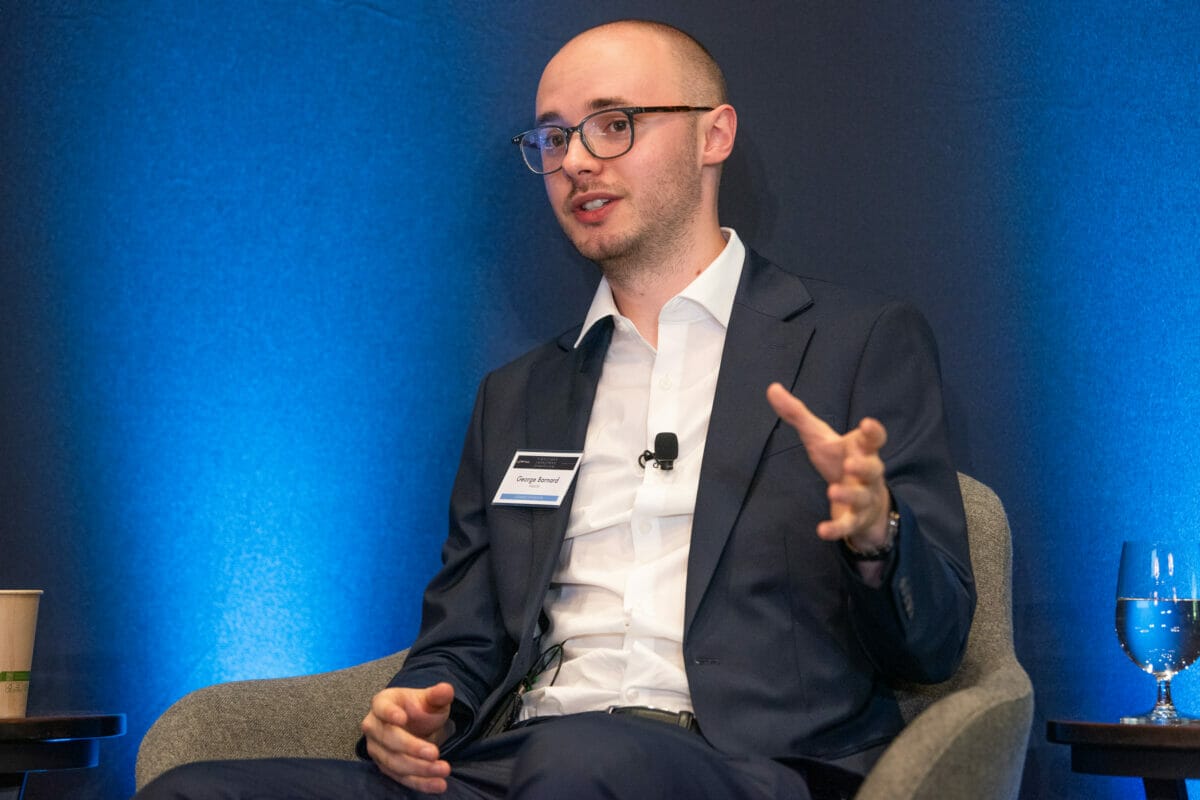Investors face challenges finding opportunities among companies that don’t have a clearly defined transition pathway. But it can made more effective by a focus on the tangible investments being made by those companies, rather than listening too closely to pledges and targets that exist only on paper.
Investors that want to address the low carbon transition as a potential investment theme should build an investment process that helps them focus on tangible investments being made by companies, not just pledges made on paper, the Fiduciary Investors Symposium at Stanford University has heard.
Affirmative Investment Management sustainable credit specialist George Barnard told the symposium the first pillar of a research process for doing that is deep company-level expertise. The second pillar is a systems or whole-economy approach; and the third is “making sure that all of this is integrated into the investment process”.
Barnard said a deep research approach involves integrating often overlapping areas of investment expertise.
“The first and most familiar to us as investors is company-level expertise,” he said.
“This is an understanding of the company. Rather than from a fundamental credit perspective [it’s understanding it] from a transition perspective. We need to understand the plans, the targets…beyond just are they targeting X percent emissions reductions?”
Barnard said one of the hurdles to the low-carbon transition is scepticism about timeframes being unrealistic, or targets set and pledges made insincerely.
“We’ve seen a lot of net-zero pledges which functionally aren’t really worth the paper they’re written on,” he said.
But if that’s the elephant in the room of the transition debate, the key to solving it is to eat that elephant one bite at a time.
“One of the problems is that we’re dealing with a very large problem and we’re not breaking it down.
“When you look at transition as a theme, and it’s just this massive economy-wide problem, it’s very hard to engage with. It’s very hard to identify a company and say, you know, yes, this is a good candidate for the low carbon transition.
“So we also need to understand the tangible investments, the capital being deployed [and] the R&D going on in the background that will actually get that company to those targets.”
Barnard said some companies, industries and sectors have relatively clear transition paths but for others it’s less clear and considerably more challenging.
As an example, the production of aluminium can use renewable energy as an input to the manufacturing process, But on the other hand, it uses anodes that decay and release CO2 into the atmosphere.
“We know there’s a solution, in anodes which don’t degrade and therefore don’t release CO2 into the environment [but] we don’t know how to make them,” he said.
Barnard said engaging with companies in “in a constructive and robust way with respect to their transition plans” is key to identifying opportunities and investment targets and supplying the capital those entities need to make the transition.
“That requires an understanding of what those risks and opportunities are, it requires an understanding of what the potential future solutions are going to be, and whether they’re realistic, and in what timeframes. And that’s really the idea behind transition analysis.”
Barnard said a core component of any company analysis is the tangible investments being made and committed to, which can’t be rolled back or reneged on.
“We like to see robust targets and strategies, but they’re not as good as seeing that this car company is building a dedicated EV plant like they’re not going to not going to knock it down in five years, that it’s locked in,” he said.
“We like to see JVs with battery producers to build huge amounts of capacity. That’s the kind of thing that allows us to be confident in the longevity of that particular strategy.
“There is always uncertainty, and we have seen companies roll back on commitments, but we aim to be as confident as we can with the information that we have at the time.”
Affinity approaches transition finance from a fixed-income perspective, because that’s its background as a manager, but Barnard stresses that the strategy need not necessarily be restricted to bonds. The genesis of the strategy was to consider what a 2050 economy looks like, and a realisation there are hard-to-abate sectors in the economy that re not receiving the investment they needed to effect a transition.
“We were looking at portfolios and thinking, there’s a need to address here,” he said.
“But when we were building that strategy to address that need, it wasn’t from the perspective of let’s go into a new asset class. It was [that] we do this, and we want to support our clients to generate the most impact they can, and to provide innovative new solutions to generate that impact. And that’s really where the strategy stemmed from.”
Barnard said the strategy has started to shift into private asset classes but is moving slowly as it gathers and assesses the quality of the data it needs to support its deep-research approach
“You’ve got to work out, okay, how do I digest this new type of data, this new availability of data?” he said.
“What levers can I pull to increase the availability of that? And so that process is ongoing, but it will, [and] there are there are challenges to solve that.”



